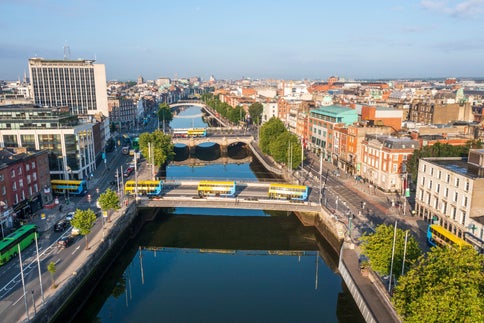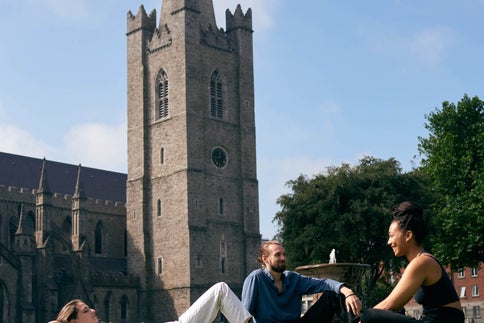- Home
- Traveller guides
- Dublin: a city of villages
Dublin: a city of villages


Dublin is packed with neighbourhoods, each with their own character.
Dublin is so much more than just its city centre. Just outside the middle of town you’ll find a tangle of different neighbourhoods, each with their own distinct personality and sense of identity. You might find a district filled with Georgian townhouses, in which the residents have lived for decades, or a historic quarter with medieval walls and relics, now home to art students and hip coffee shops.
Some are just minutes from the city centre, while others are further out on the coast. But these neighbourhoods all make up the tapestry that is Dublin city. Fancy exploring them yourself? This guide will show you how.
- 1.
- 2.
- 3.
- 4.
- 5.
- 6.
- 7.
- 8.
- 9.
- 10.
- 11.
Portobello
A fairly quiet residential neighbourhood, Portobello is made up of Georgian townhouses and cottages, where residents bring chairs to their front doors to catch the evening sun and chat with their neighbours. Join the locals in the queue at Bretzel Bakery for a freshly baked baguette or warm Danish pastry, or head to the local favourite Lennox Street Grocer for a coffee or a glass of wine, best enjoyed on one of their outdoor tables. Portobello was historically the centre of the Jewish community in Dublin and you can learn all about the Jewish heritage and history in the Irish Jewish Museum, which is open every Sunday.
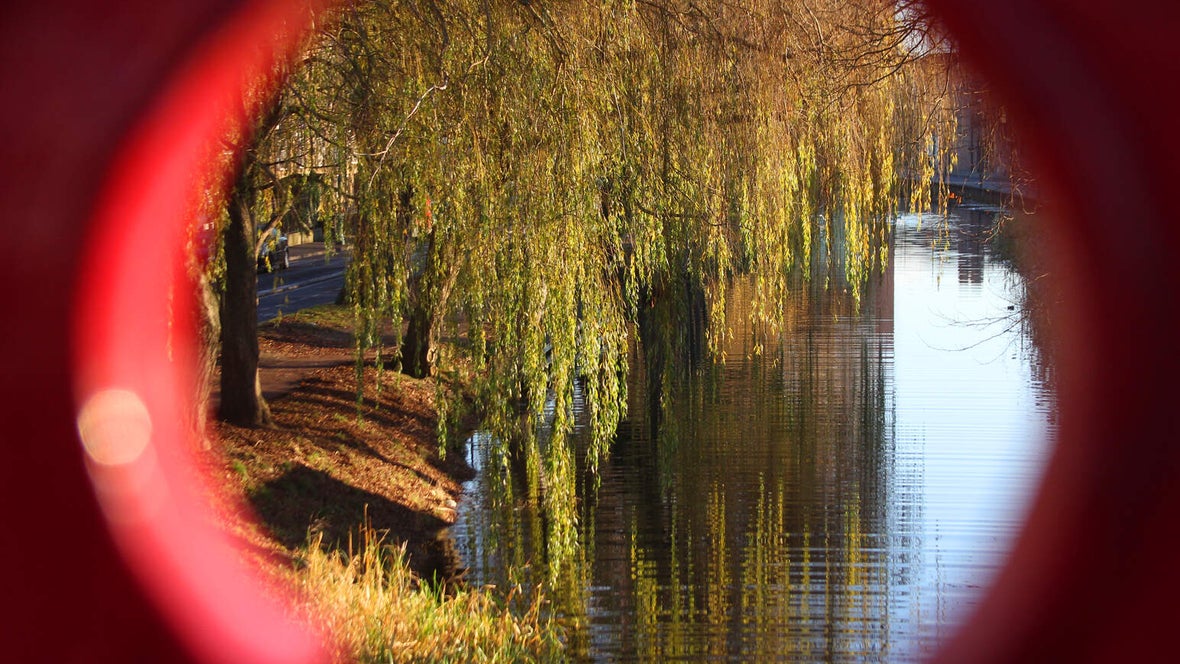
Ranelagh
With grand red brick townhouses and leafy gated parks, Ranelagh is home to some of the most coveted addresses in the city. Most of the action takes place on the main throughfare, a road also named Ranelagh, where you’ll find book shops, restaurants and Italian coffee shops that sell spritzes when the sun goes down. But the side streets that branch out from the main road are well worth exploring, if only to snoop at the dreamy real estate. You’ll often find locals gathered in The Hill Pub or Smyth’s of Ranelagh for a pint in the courtyard.

Rathmines
Ranelagh’s next-door neighbour is the lively Rathmines, a hub for students and young professionals who make the most of the local pubs, bars and restaurants. It’s also home to the Stella Cinema, an art deco theatre where you can watch classic movies and new releases on a plush armchair, while cocktails are brought right to your seat. Just up the road, Kodiak offers a drink menu that would please any craft beer lover and a small but mighty pizza menu. The arty crowd hang out at the tiny MART Gallery, set in an old fire station.
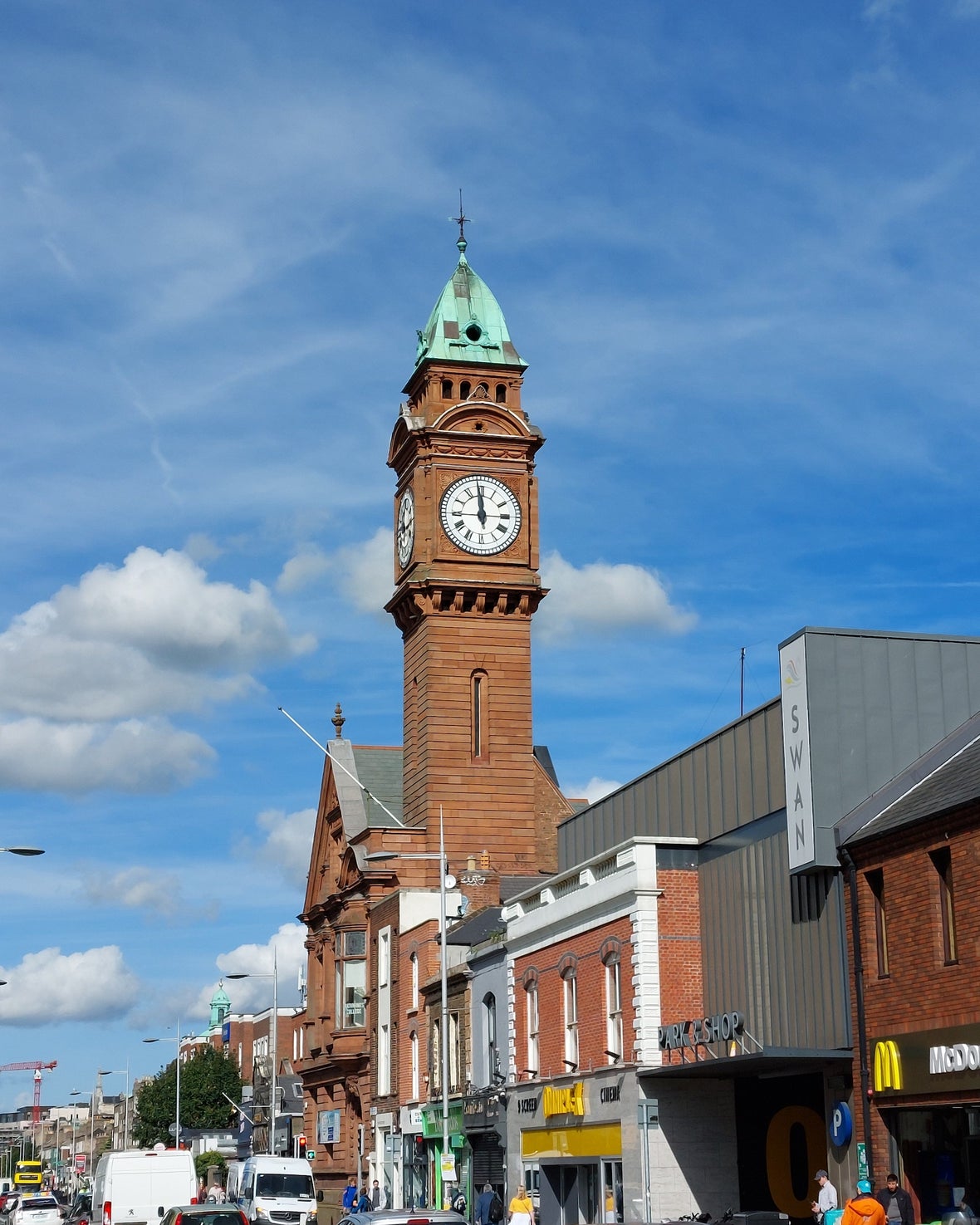

The Liberties
Marked by two cathedrals, Christ Church Cathedral and St Patrick’s Cathedral, the Liberties is a neighbourhood where Viking history blends with an artsy new community. The Liberties was once the whiskey capital of the world and is once again dotted with distilleries like Teeling and Roe & Co, which are open for tours and tastings. Visit the gallery and café Hen’s Teeth to get a taste of the art world, or catch a gig at Vicar Street, a live music venue with regular gigs from world famous bands, performers and comedy acts.

Sandymount
The nearest beach to the city centre is in Sandymount, an elegant residential suburb with a laidback seaside vibe. Make the most of the coastal setting by taking a walk along Sandymount Strand, with an obligatory ice cream from Scoop, or take a longer stroll along to the Great South Wall for views of Dublin Bay and beyond. All of the action takes place around Sandymount Green, a grassy triangle bordered with casual cafés, restaurants and a couple of pubs. The local favourite Bujo is right on the green, serving up artisanal burgers and loaded fries, along with thick milkshakes.
Stoneybatter
From the outside, Dublin’s original urban village doesn’t seem to have changed too much over the years. The residential streets are lined with Victorian terraced houses and tiny communal gardens, but the main drag is full of action. Local hipsters gather in places like L Mulligan Grocer, a gastro pub with a huge range of craft beers and rare whiskeys. Newer to the scene is Grano, an Italian restaurant where the owner’s mother frequently comes over from Calabria to keep an eye on the kitchen. Besides serving a great pint, the beer garden at the Glimmer Man is where you’ll find gourmet street food, with a rotation of food trucks serving up things like Vietnamese banh mi or Filipino hot dogs.
Smithfield
With Victorian terraces alongside sleek high rise apartments, Smithfield blends old school Dublin with a new version of the city. On the main square, a distinctive red brick tower marks the Jameson Distillery, which was established on this spot in 1780. Just over the cobbles is the Lighthouse Cinema, an arthouse theatre that screens classic movies as well as offbeat new releases. A lot of street artists have made their mark in Smithfield, from the trippy mural of a boy on a horse on Stirrup Lane to the realist portrait just by the coffee shop Proper Order. At the top of the square, the Cobblestone is one of the best pubs in the city for traditional music.

Phibsborough
To the north of the city, Phibsborough has experienced something of a renaissance over the last few years, since being voted one of the world’s coolest neighbourhoods by Time Out in 2020. The Blessington Street Basin makes for a lovely canalside stroll, or you can take a longer walk along the water to Croke Park. In Two Boys Brew, you’ll find top notch coffee and avocado toast, and the vintage shop slash café Bang Bang serves up a brunch burger packed with black pudding, sausage and bacon.
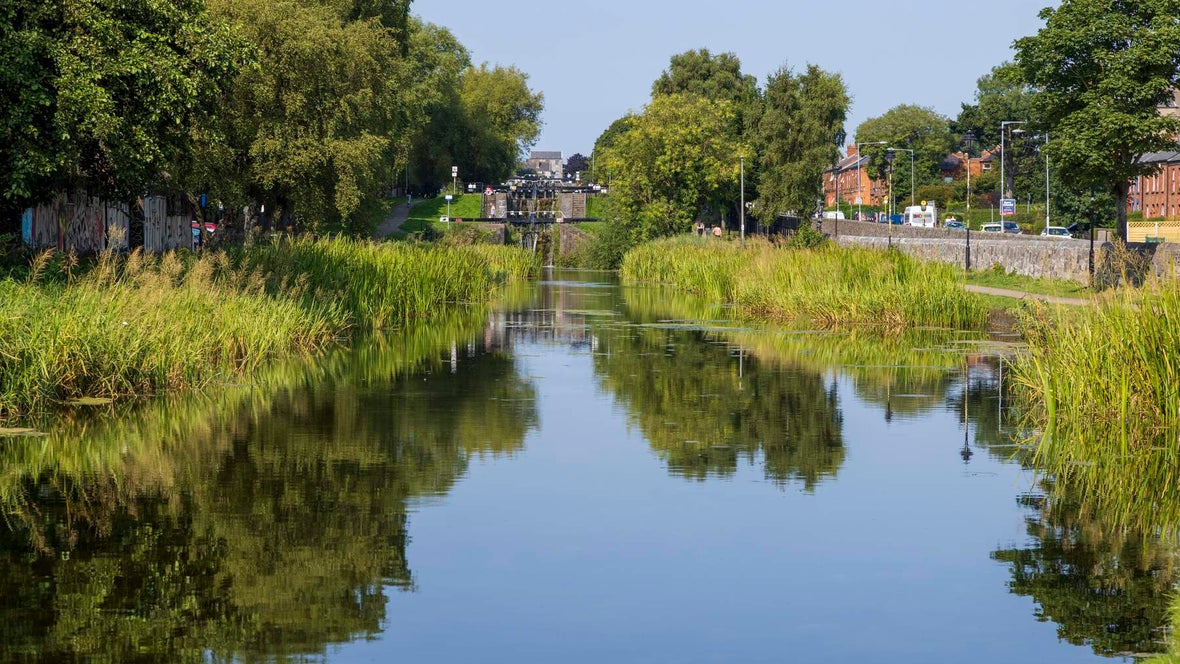
Drumcondra
Drumcondra is home to the sprawling campus of Dublin City University, so, it’s one of the city’s main student areas. And that means lots of bargain eats, like the Middle Eastern feasts at Shouk, with mezze platters of hummus, baba ghanoush and zhoug with alongside giant homemade pittas. The courtyard of the Bernard Shaw pub is where you’ll find Eatyard, with loads of street food vendors from Thursday to Sunday. Just on the outskirts of the village, the National Botanic Gardens are free to enter and filled with beautiful rare plants, in both the grounds and the Victorian glasshouses.

Clontarf
The suburban village of Clontarf hugs the northern shores of Dublin Bay and is one of the city’s sought after addresses, a far cry from 1014 when it was the setting of a historic battle between Vikings and the native Irish. The big attraction for locals and visitors alike is a stroll along Bull Island and Dollymount Strand, a dune lined beach with views back to Dublin city. At the start of the beach walk is Happy Out, a café built from shipping containers that serves great coffee and cheese toasties. Back on the mainland, the pub Connolly’s The Sheds has been a local favourite since 1845 and you’ll find cool indie productions upstairs in the Viking Theatre.
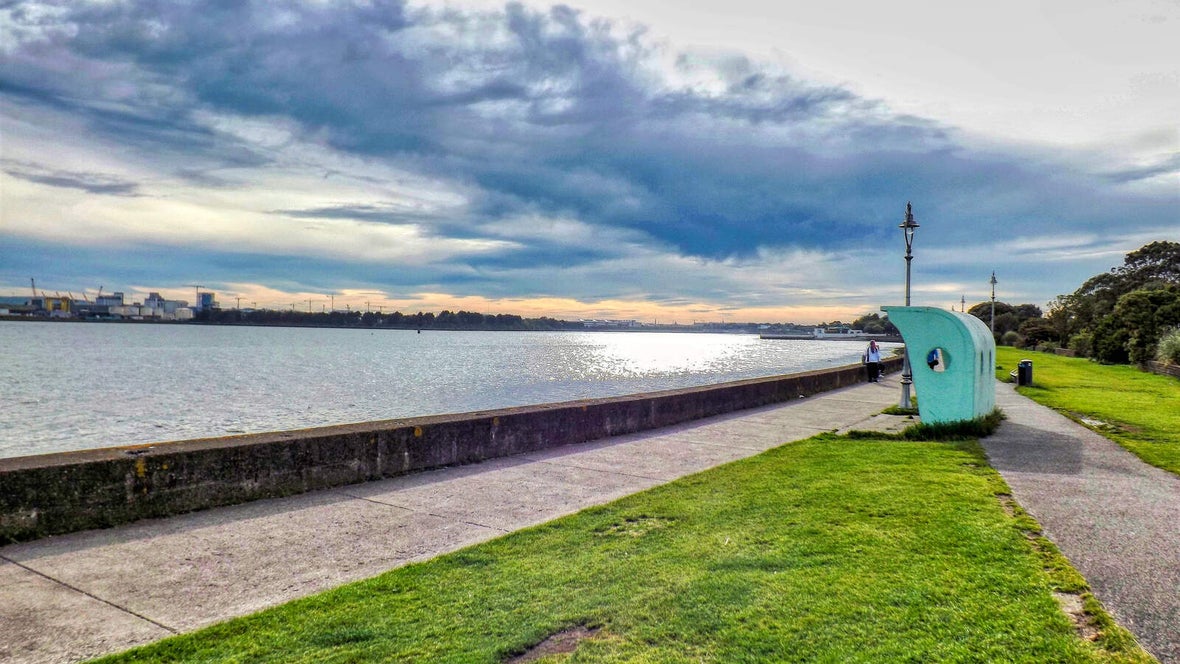
Kilmainham
Spanning the south side of the Liffey to the west of the Guinness Storehouse, Kilmainham is home to two of the most popular attractions in Dublin. The Irish Museum of Modern Art (IMMA), curls around a central courtyard and exhibits a variety of contemporary art. You’ll find many a local out for a walk in the surrounding gardens and meadows, too, while the restaurant serves great sandwiches and salads. Kilmainham Gaol opened in 1796 and is where many a political prisoner was held, including the leaders of the Easter Rising of 1916, who were executed in the courtyard. Nowadays, visitors are led through the cells and hallways to learn all about the history of both the jail and the country. A short walk from the gaol is the very traditional Old Royal Oak pub, one of the loveliest spots in town to enjoy a pint.
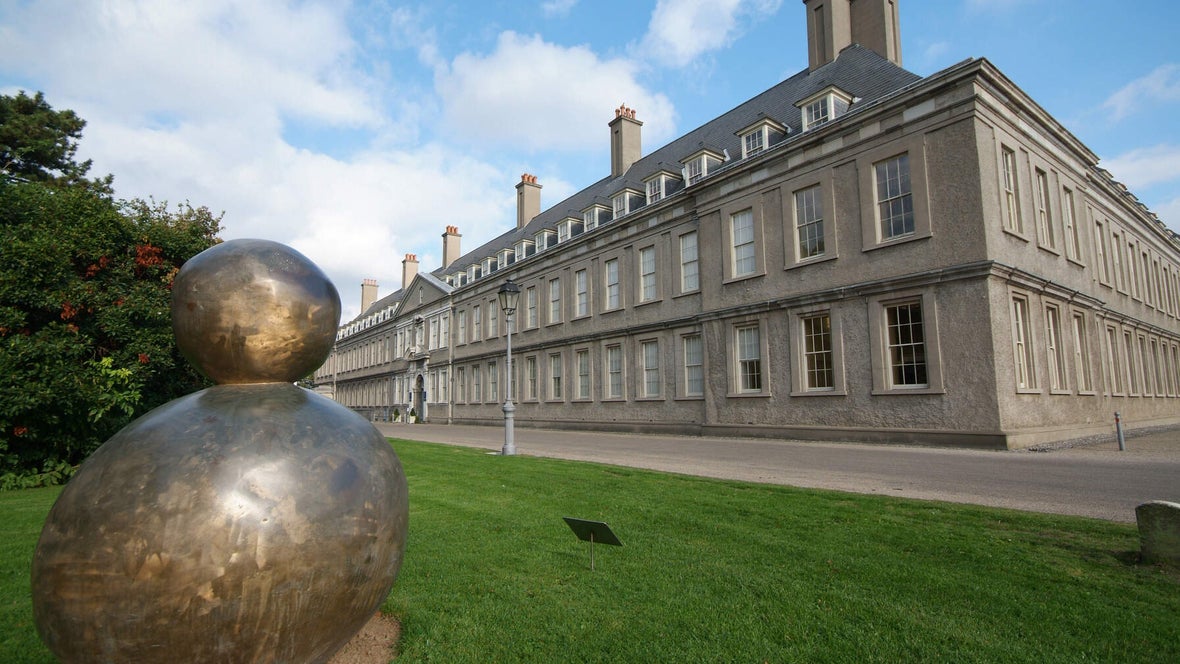
Explore the villages outside the city
Head out to County Dublin to explore the villages along the coast, exploring the stops along the Dublin Coastal Trail.

